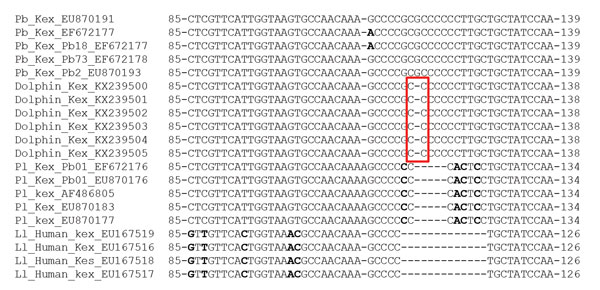Volume 22, Number 12—December 2016
Research
Cutaneous Granulomas in Dolphins Caused by Novel Uncultivated Paracoccidioides brasiliensis
Figure 2

Figure 2. Nucleotide sequences of partial Kex gene exons of Lacazia loboi (Ll) and Paracoccidioides brasiliensis (Pb), including pathogen DNA sequences isolated from bottlenose dolphins, Indian River Lagoon, Florida, USA, and P. lutzii (Pl) containing mismatches (bold) and unique gaps. Red box indicates DNA sequences missing a nucleotide present in P. brasiliensis from humans. Numbers before and after sequences indicate nucleotide location of the depicted epitope. –, deletion.
Page created: November 29, 2016
Page updated: November 29, 2016
Page reviewed: November 29, 2016
The conclusions, findings, and opinions expressed by authors contributing to this journal do not necessarily reflect the official position of the U.S. Department of Health and Human Services, the Public Health Service, the Centers for Disease Control and Prevention, or the authors' affiliated institutions. Use of trade names is for identification only and does not imply endorsement by any of the groups named above.